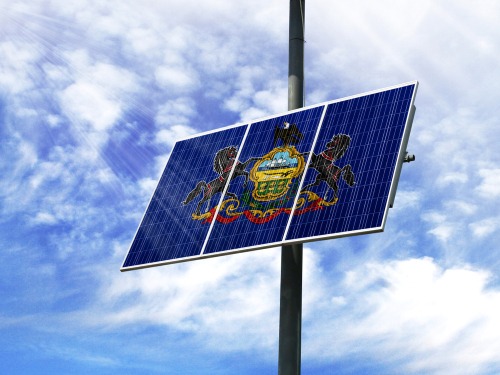
Pennsylvania State Sen. Gene Yaw (R-23) raised questions about Gov. Tom Wolf’s plan to produce nearly 50 percent of the state government’s electricity through solar energy.
Wolf’s Pennsylvania PULSE (Project to Utilize Light and Solar Energy) involves the constriction of seven new solar energy arrays totaling 191-megawatts around the state. Constellation, owned by Exelon, and Lightsource bp have been tapped to build and manage the project. It will go into operation on Jan. 1, 2023. It is the largest solar commitment by any government in the United States.
The solar arrays will be built in seven locations in Columbia, Juniata, Montour, Northumberland, Snyder, and York counties. It will deliver 361,000 megawatt-hours of electricity per year, supplying about half the electricity used by state government. Wolf said it will create more than 400 jobs and lower carbon dioxide emissions statewide by 157,800 metric tons each year.
“I have said repeatedly, I favor a diverse energy portfolio,” Yaw, chairman of the Senate Environmental Resources and Energy Committee, said. “I am not against any energy source. What I am against is the failure to recognize what “clean” energy really entails. There is a manufacturing process, which is totally ignored. Further, the intermittent nature of wind and solar requires a duplicate generation system powered by coal, gas or nuclear.”
Yaw pointed out that Pennsylvania is the second-largest producer of natural gas in the United States. Producing 20 percent of the natural gas used in the country. “When are we going to stop apologizing for the abundant resources we have?”
Yaw said 191 MW of solar could occupy 1,337 acres of open farmland, based on estimates by the National Renewable Energy Laboratory that it takes seven acres of land to produce one MW.
“I have two combined cycle gas fired power plants in my district, which produce 825 MW of electricity each for a total of 1,650 MW of electricity day and night irrespective of the weather conditions. The total acreage for both of these power plants is approximately 40 acres. To produce that much intermittent solar power, about 12,000 acres of panels would be required.”
Yaw said the PULSE Project leaves many questions unanswered, like how much it costs Pennsylvania taxpayers for both the solar electricity and the solar credits.
“The Wolf Administration’s go-it-alone approach and clear failure to engage the Legislature on any energy-related plan will not only cause more pain for Pennsylvania consumers as they struggle to pay their bills, but today’s solar announcement will unquestionably add more stress on the state’s agricultural ecosystem while raising questions about zoning, decommissioning, recycling and reclamation,” Yaw said.